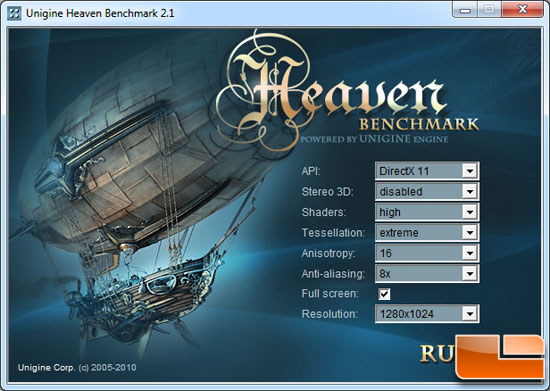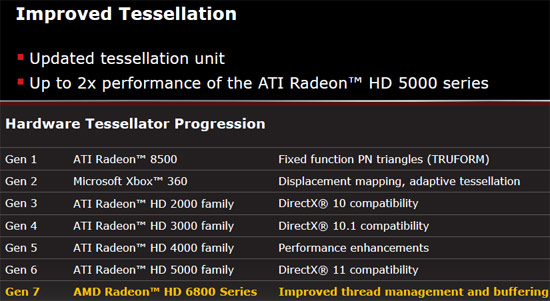AMD Radeon HD 6850 and 6870 CrossFire Video Card Review
Unigine ‘Heaven’ DX11

The ‘Heaven’ benchmark that uses the Unigine easily shows off the full potential of DirectX 11 graphics cards. It reveals the enchanting magic of floating islands with a tiny village hidden in the cloudy skies. With the interactive mode emerging, experience of exploring the intricate world is within reach. Through its advanced renderer, Unigine is one of the first to set precedence in showcasing the art assets with tessellation, bringing compelling visual finesse, utilizing the technology to the full extent and exhibiting the possibilities of enriching 3D gaming. The distinguishing feature of the benchmark is a hardware tessellation that is a scalable technology aimed for automatic subdivision of polygons into smaller and finer pieces so that developers can gain a more detailed look of their games almost free of charge in terms of performance. Thanks to this procedure, the elaboration of the rendered image finally approaches the boundary of veridical visual perception: the virtual reality transcends conjured by your hand.

We ran the Heaven v2.1 benchmark that just recently out with VSync turned disabled, but with 8x AA and 16x AF enabled to check out system performance. We ran the benchmark at 1920×1200 and 1280×1024 to see how the benchmark ran at some different monitor resolutions. It should be noted that we ran the new extreme tessellation mode on this benchmark. These are the toughest settings that you can run on this benchmark, so it should really put the hurt on any graphics card.
Heaven v2.1 was really important to include as it has a setting for extreme tessellation and that should see if AMD has really made any performance increases with their new tessellation engine as they claimed they are seeing up to a 2x performance improvement over the Radeon HD 5000 series with the new Radeon HD 6000 series.

If things are working like they should then we should see some good tessellation performance with the Radeon HD 6000 series cards since they have improved thread management and buffering.

Benchmark Results: Sure enough we see a modest 9% performance gain in the Radeon HD 6870 compared to the Radeon HD 5870. The NVIDIA ‘Fermi’ GeForce 400 series cards do very well at tessellation though. AMD’s 7th generation hardware tessellator does look like a step in the right direction. What happened to the up to 2x performance gain that AMD talked about?

Well, the key word there is up to and it depends on the tessellation factor that is being run on the GPU. As the tessellation factor increases the improvements made to thread management and buffering decrease in effectiveness. We aren’t sure what tessellation factor is being used in the Heaven Benchmark.

Comments are closed.